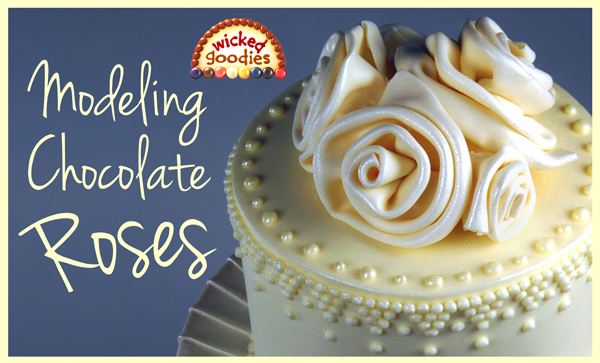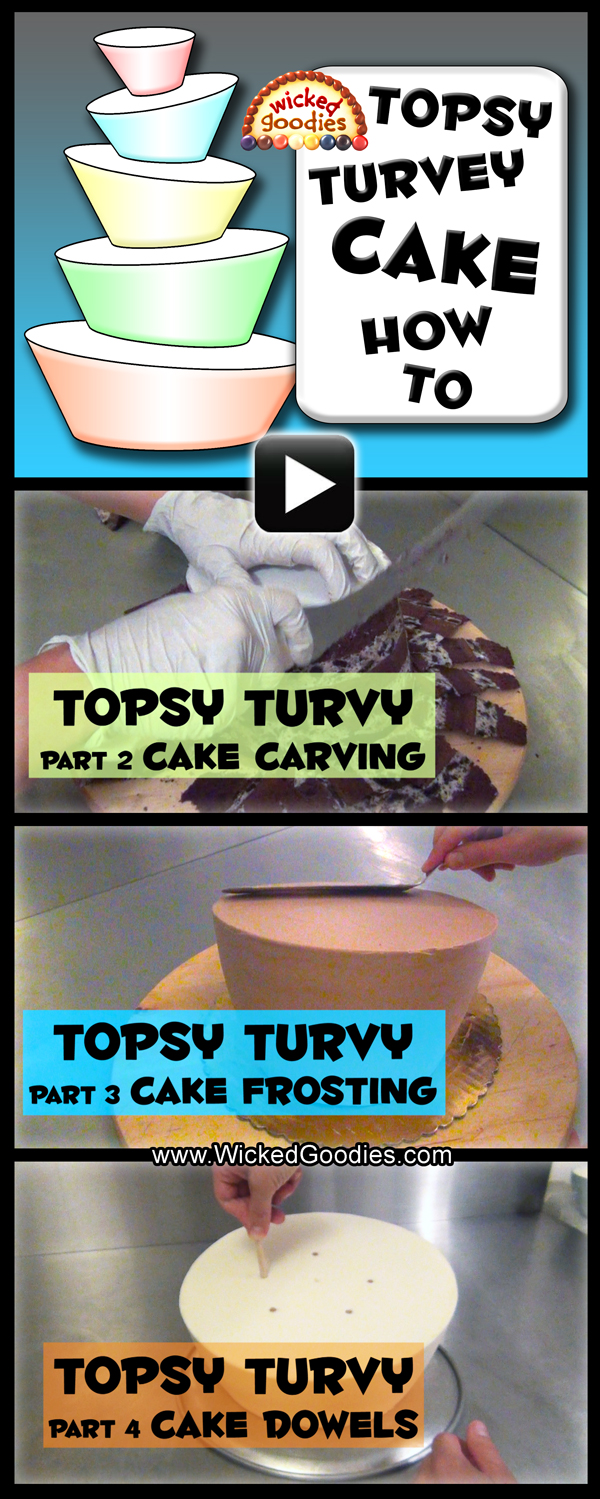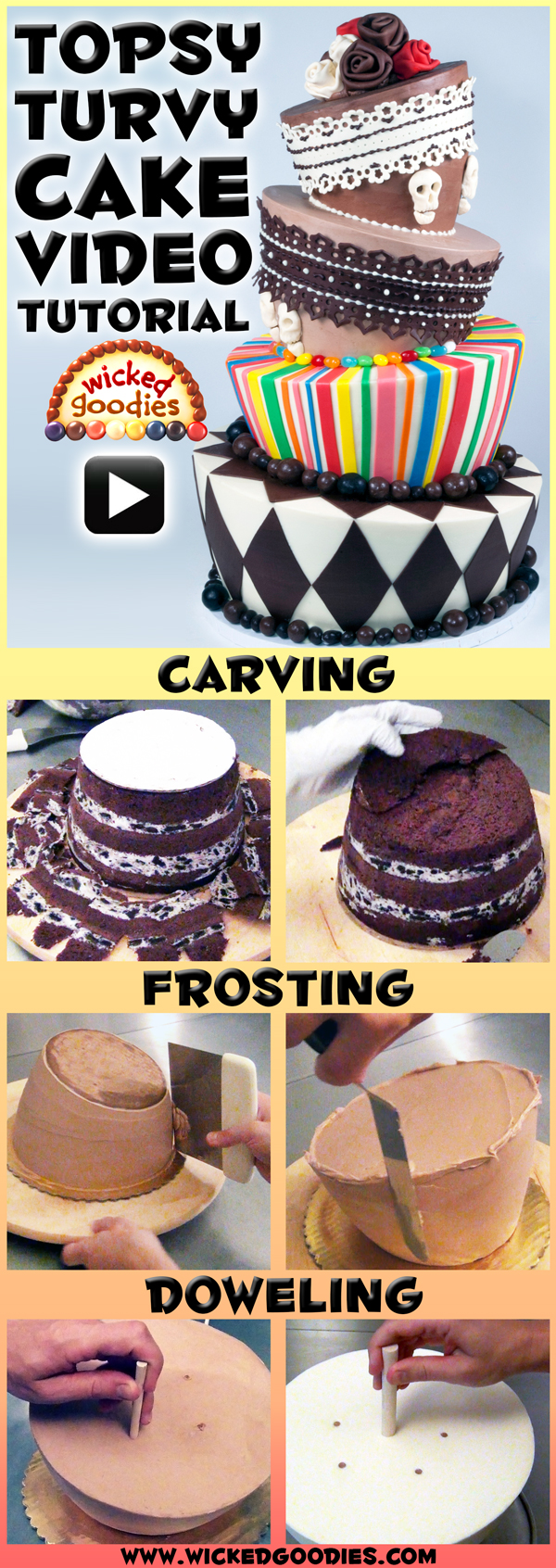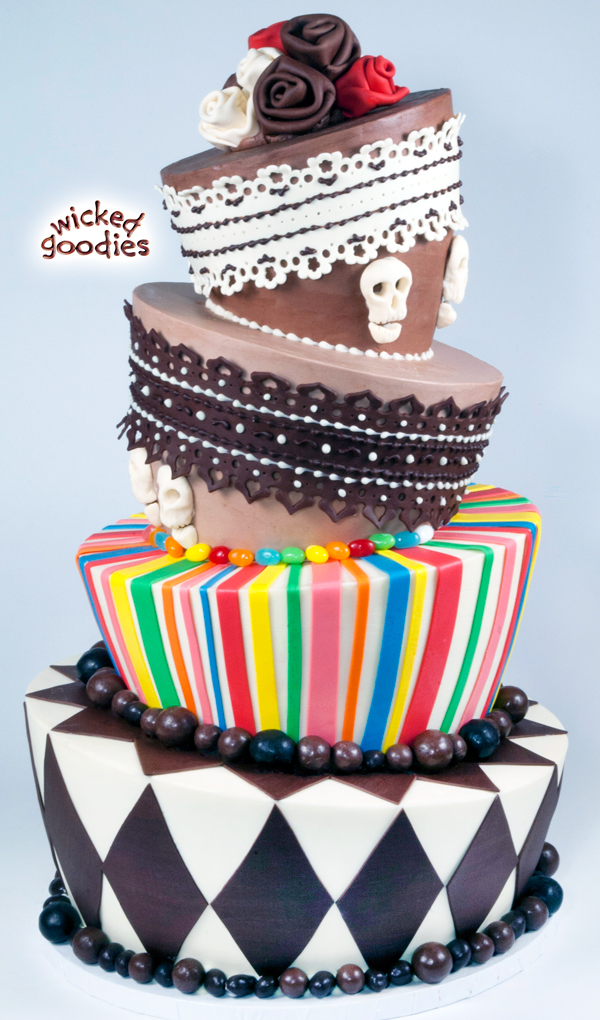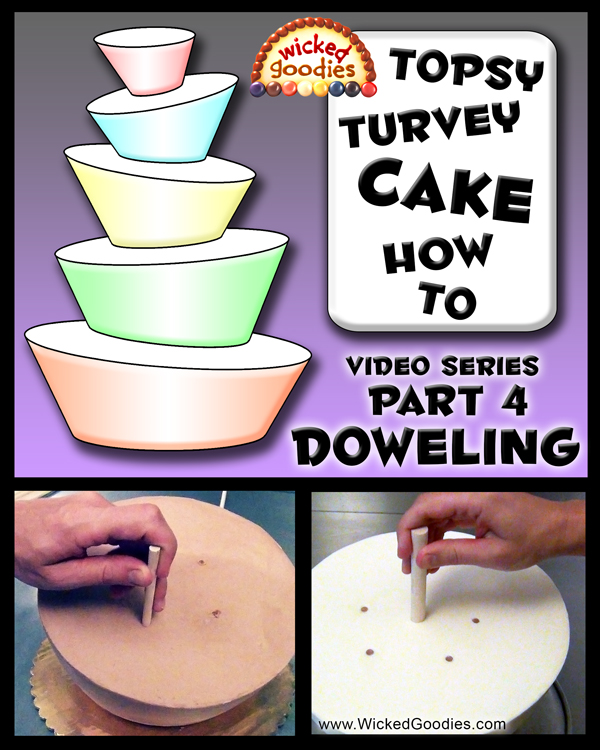
In this segment of a 4-part video tutorial on the topsy turvy cake, I demonstrate how to measure and insert wooden dowels for a topsy turvy cake frosted with buttercream.
VIDEO: Topsy Turvy Cake Tutorial 4 – DOWELING
Related Links
Part 1: Intro
Part 2: Carving
Part 3: Frosting
Cake Filling in the Pan Series
How to Use Wood Dowels in Stacked Cakes
How to Dowel & Stack a Topsy Turvy Cake
Once the cakes are frosted and chilled just enough so the buttercream is fully hard, it’s time to add the support infrastructure. I prefer to use wooden dowels, especially for topsy turvy cakes.
1. Mark the top of the cake where you plan to insert the dowels. The dowels should go ½ – 1-inch inside the outline of where the tier above will rest. In the video I’m eyeballing it but I recommend using a parchment paper guide that is the same size as the base of the tier that gets stacked above in order to position your dowels correctly.
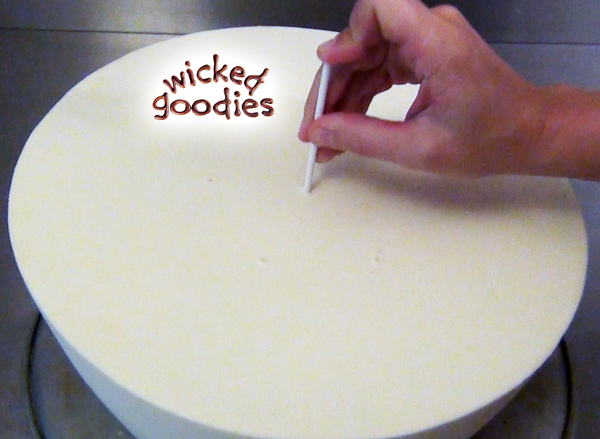
2. Insert lollipop sticks or long skewers into the cake. Insert them at a slight angle matching the slope of the cake. You want the dowels to be vertical once the cake is assembled so you have to account for the fact that this tier will be sitting on an angle.
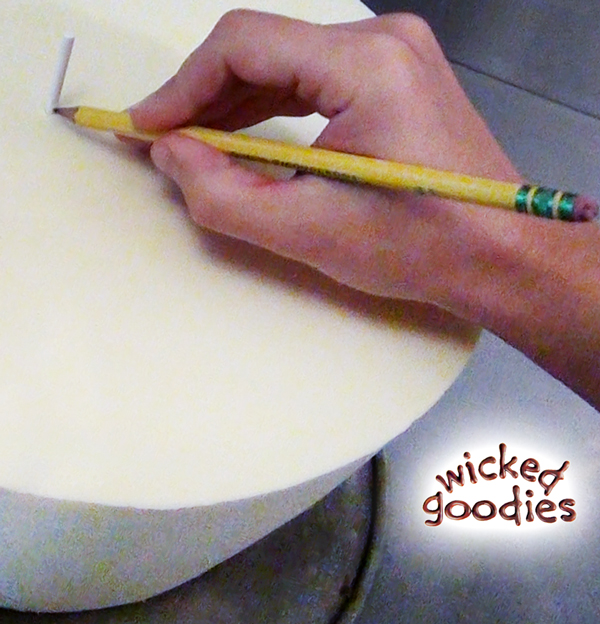
3. Mark the stick to measure the height of the cake. Since the cake is sloped, you will need to do this more than once since the height of some of the dowels will be different.
Remove the sticks from the cake. Be sure to keep careful track of which sticks go with which cake tier.
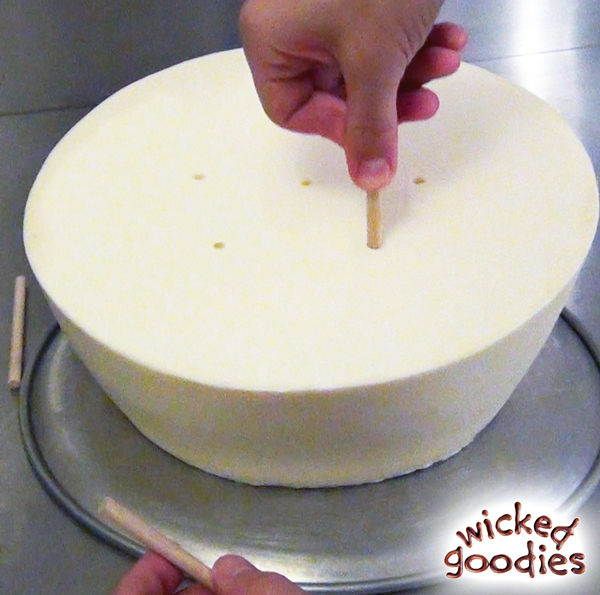
4. Use the sticks to mark wooden dowels then cut and sand them down to size. I recommend marking the dowels 2 millimeters shorter than the marks on the sticks so there is no chance that the dowels end up being too long. If the dowels extend beyond the surface of the frosting, that could compromise the cake’s stability once it’s stacked.
5. Make sure the matching dowels are true before inserting them into the cake. Press down on each one to make sure they hit the cardboard base.
For larger tiers that require a star configuration of dowels, some of the heights may match but it’s possible that they will all be different so each hole should be measured separately.
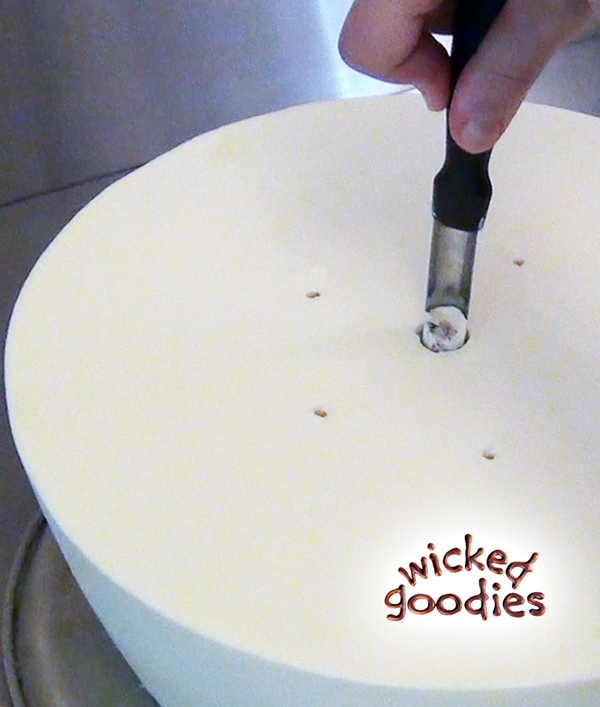 For the thicker center dowels, use a saw to cut them down to size. To make room in the cake for thicker dowels, I recommend coring out holes using bubble tea straws or an apple corer. If you don’t remove the cake that will be displaced by a thick dowel, you run the risk cracking the surface of the cake from excess pressure. Base tiers often require thicker dowels all around. Top tiers require no vertical support dowels since nothing gets stacked on top.
For the thicker center dowels, use a saw to cut them down to size. To make room in the cake for thicker dowels, I recommend coring out holes using bubble tea straws or an apple corer. If you don’t remove the cake that will be displaced by a thick dowel, you run the risk cracking the surface of the cake from excess pressure. Base tiers often require thicker dowels all around. Top tiers require no vertical support dowels since nothing gets stacked on top.
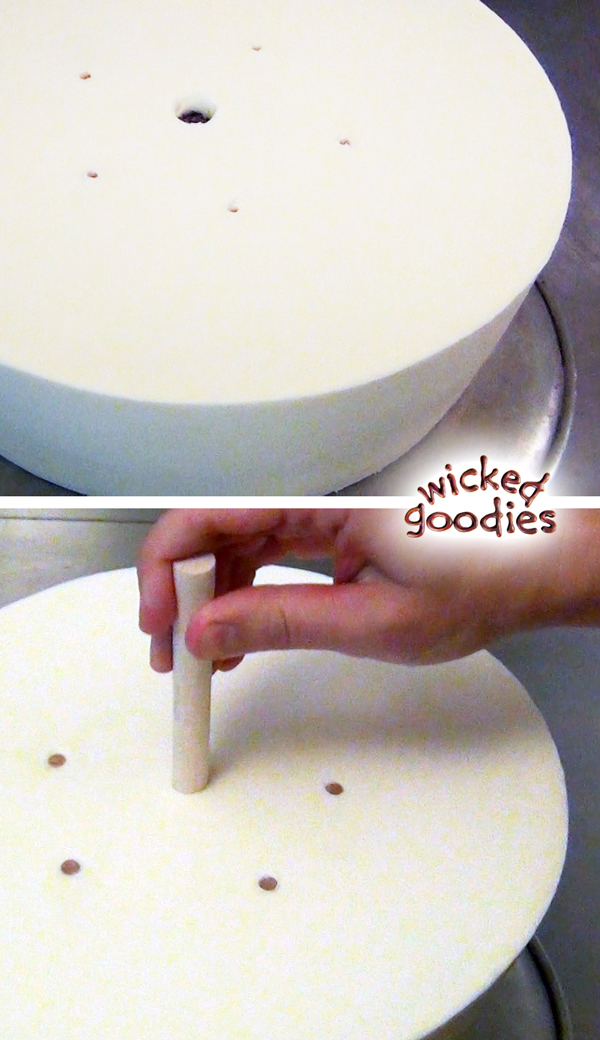
6. Once the dowels are all inserted into the cake tiers, I recommend decorating each tier separately before assembling the cake. I also recommend placing a piece of parchment paper on the top surface of each of the lower tiers. It should be the same size as the base of the tier that gets stacked above. This will help guide your placement as well as prevent the tiers from sticking together so you can shift them around if you need to when you stack them. It will also make it easier to disassemble the cake when it’s time to cut it.
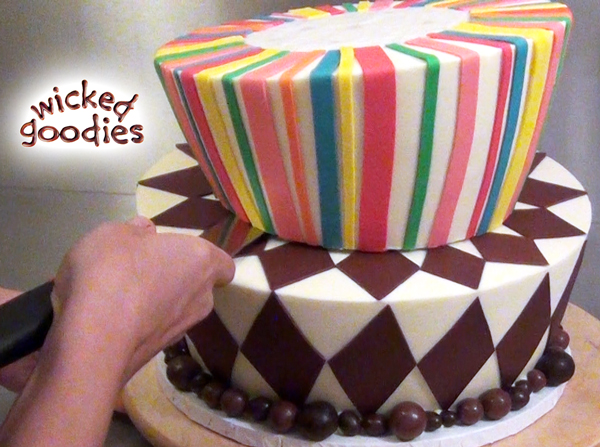 7. Once the tiers are stacked, secure them from shifting side-to-side by passing long pointed dowels through the cardboard into the tier below. You may need to use a hammer to penetrate the cardboard. I call this type of dowel “horizontal supports” since they prevent the tiers from shifting horizontally.
7. Once the tiers are stacked, secure them from shifting side-to-side by passing long pointed dowels through the cardboard into the tier below. You may need to use a hammer to penetrate the cardboard. I call this type of dowel “horizontal supports” since they prevent the tiers from shifting horizontally.
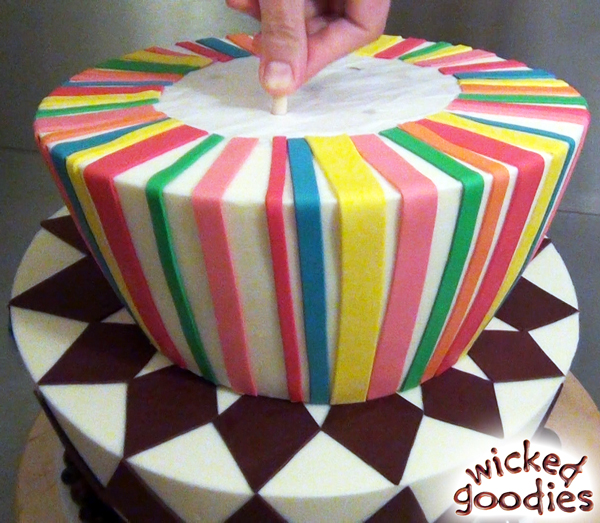
Once all the tiers are stacked with pointed dowels holding them securely in place, you may add the topper.
Related Links
Part 1: Intro
Part 2: Carving
Part 3: Frosting
How to Use Wood Dowels in Stacked Cakes
Get the Buttercream Recipes
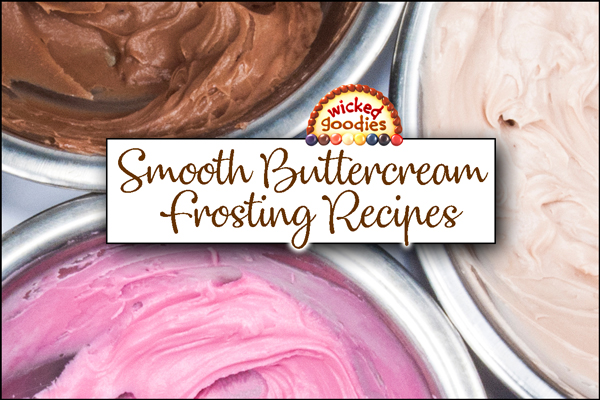
How to Use Wood Dowels in Stacked Cakes
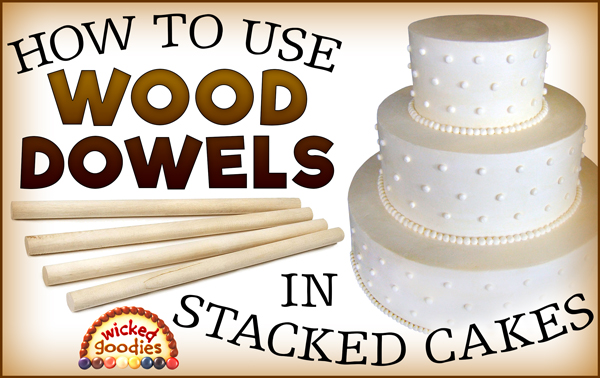
Filling Layer Cakes in the Baking Pan
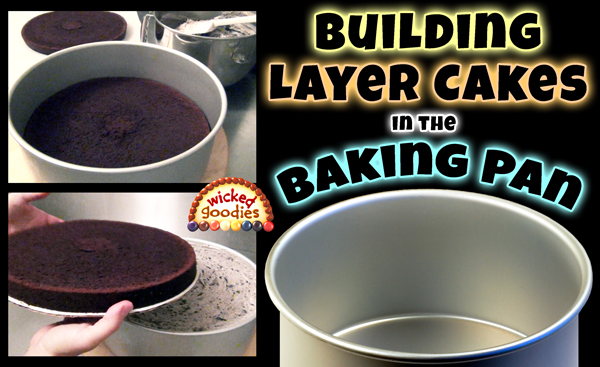
How to Freeze and Thaw Cakes
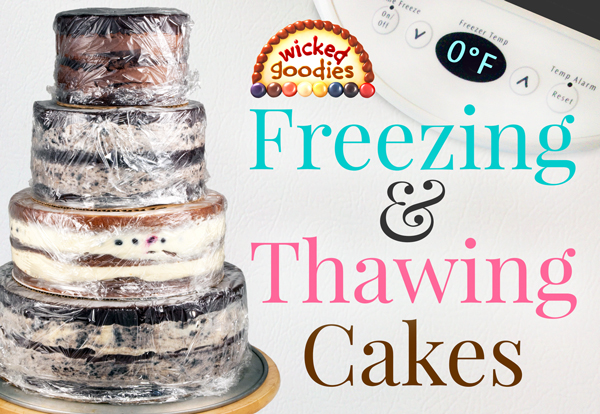
You might also enjoy
Modeling Chocolate Lace Wrap
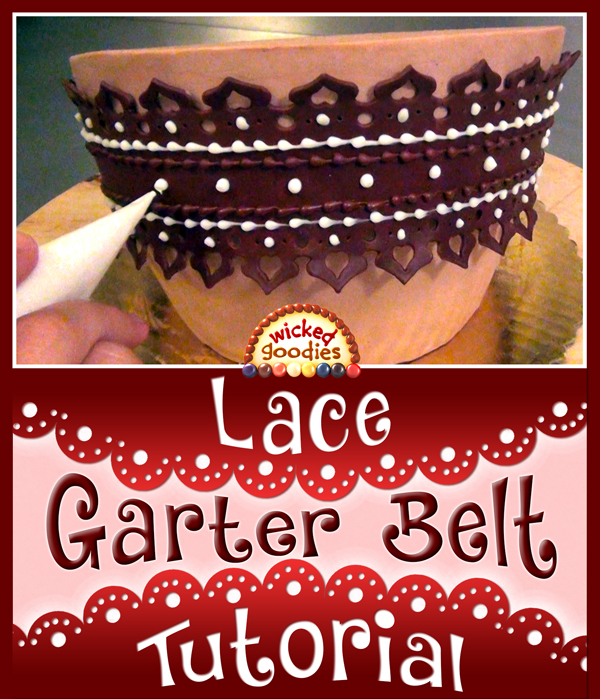
Modeling Chocolate Cake Stripes
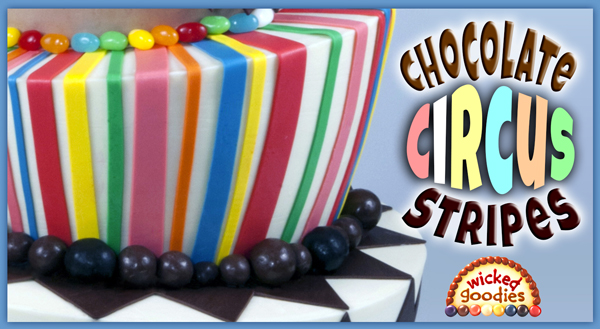
Modeling Chocolate Roses
